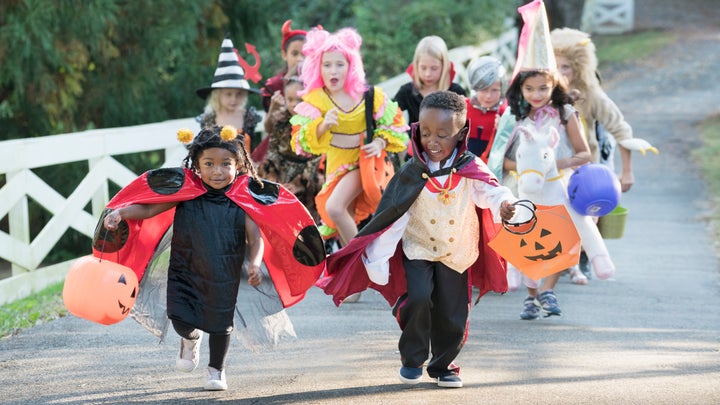It’s the week of the year when kids dress up in costumes and go from door to door asking strangers for candy. But when and how did this annual tradition get started?
Historians have offered various trick-or-treating origin theories. The earliest goes back to the old Celtic festival of Samhain, which ushered in “the dark half of the year” in the Northern Hemisphere.
According to legend, the realms of the living and the dead came together during this fall festival, so Celts would sometimes dress up as spirits to elude evil demons. There have also been reports of food and animal sacrifices, as well as tricks and pranks blamed on mischievous fairies visiting during this time.

As Christianity spread, this fall tradition got a religious spin. Around the 9th century, Catholic festivals like All Souls’ Day (November 2), All Saints’ Day (November 1) and All Hallows’ Eve (October 31) rose to prominence. During this time, some people would dress up as angels, saints or demons.
The tradition of “souling” was also popularised. Children and poor adults would walk around to different homes and collect money or food (sometimes a round pastry with a cross on top, called a “soul cake”) in return for songs and prayers for souls of the wealthy homeowners’ dead relatives.
Over the following centuries in Britain and Ireland, there were many accounts of children engaging in souling as well as “guising” and “mumming” ― outings that involved wearing costumes (aka disguises) and going from house to house to perform songs, poems, short plays or even card tricks in exchange for food or money.
Many historians see these practices as precursors to trick-or-treating, and, in a sense, they were trick-for-a-treat exchanges. The specific term “trick or treat” reportedly first made its appearance in print in 1927, in a line from a newspaper out of Alberta, Canada:
“The youthful tormentors were at back door and front demanding edible plunder by the word ‘trick or treat’ to which the inmates gladly responded and sent the robbers away rejoicing.”
British and Irish emigrants arriving in America in the 19th and 20th centuries often receive credit for popularising All Hallows’ Eve celebrations in the US, but the practice of trick-or-treating really took hold in the 1930s. Some believe that the wholesome kid-friendly version of trick-or-treating emerged in response to the more rowdy, vandalism-filled Halloween nights in the 30s.

Regardless, World War II sugar rations curbed the trick-or-treat fun for a while, but in the 1950s, the Halloween sweets started flowing again and candy brands took advantage of the tradition.
Classic Halloween candies that were available in that decade remain popular to this day, with Reese’s Peanut Butter Cups, M&M’s and Tootsie Pops appearing in many favourite candy rankings. Popular 1950s candies like Necco Wafers and black licorice are a bit less beloved today.
In 2019, Americans alone will spend an estimated $2.6bn on candy – but wherever you’re trick-or-treating, be sure to eat up and stay safe!
This story originally appeared on HuffPost US.
